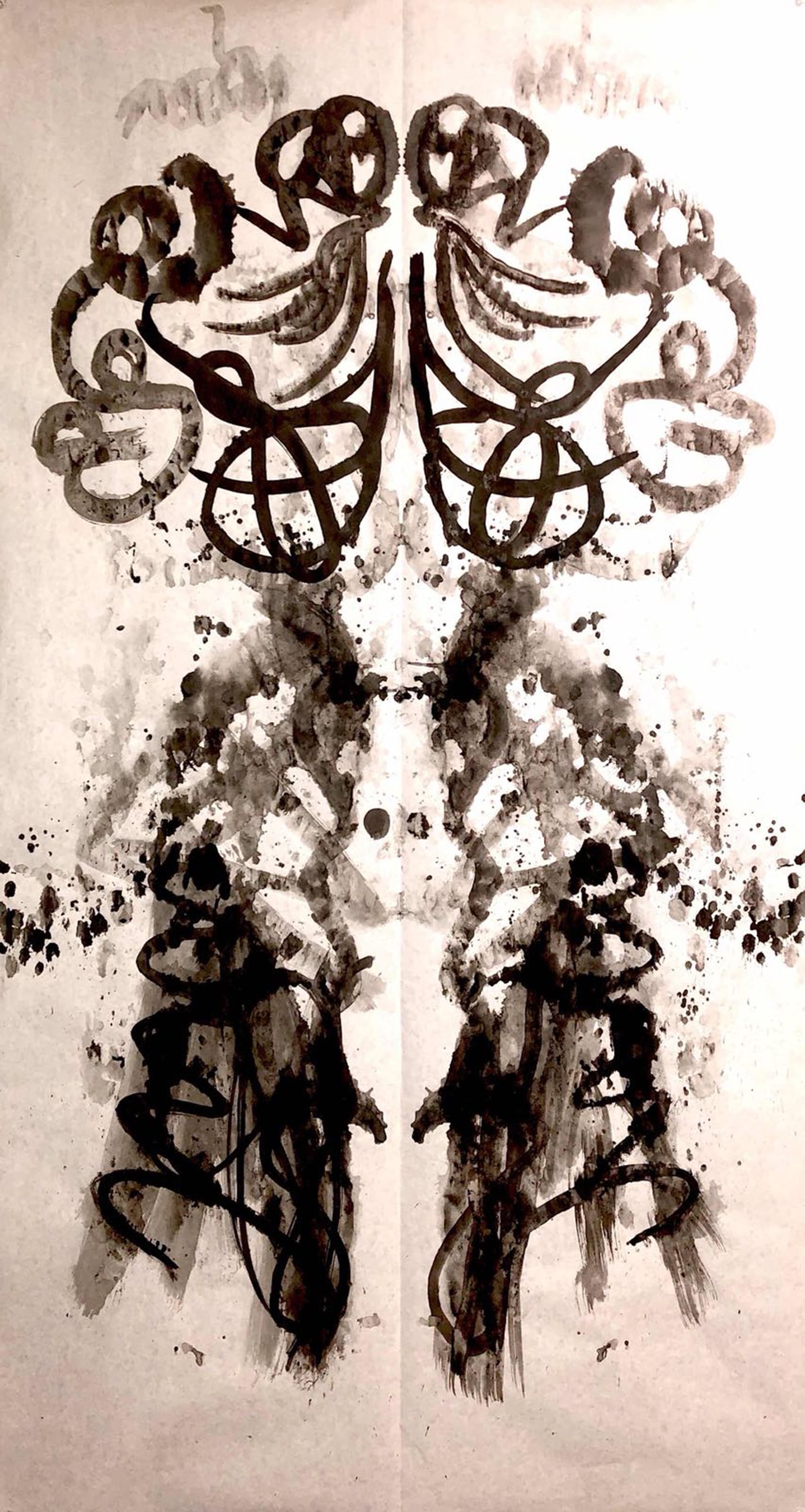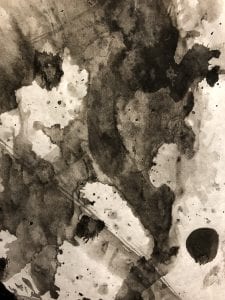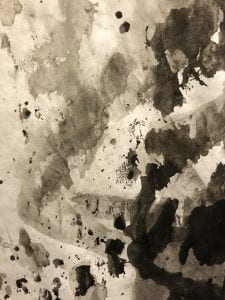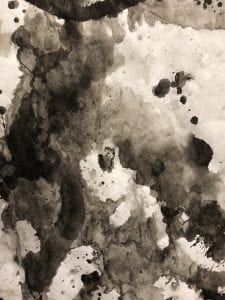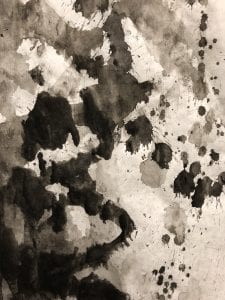Symmetrical Silhouette Ink Blot
In this project, we get to explore the elements of symmetry and abstraction by using black ink on a piece of paper.In paris of two or groups of 3, students will be choosing their distribution of materials and create a vertical/nearly symmetrical abstraction through taking turns painting, pouring, splashing ink onto a large-scale paper (“36×54”) working as a group seek to explore the formations of the symmetric and identify the elements that they see through the ink blots.
Materials (Mediums)
Large scale paper (“36×54”), Sumi brush, containers (cups) of water, phone camera, India ink.
Inkblot Process
- In pairs of two or groups of three, we first gather all the materials and clear out the work space and set it ready for us to begin to create a long symmetrical composition by using India Ink on paper.
- The process of creating symmetrical composition, we take turns to enhance with ink and different inking techniques (such as splashing, drawing, pouring, etc) onto the paper with he intention of trying to keep the image or the composition somehow abstract and symmetrical.
- At the beginning of the process, we didn’t really know how to work with India Ink. We started inking pretty harshly (the ink turns out quite strong and dark). However, as we taking turns experimenting different inking techniques, we started to get our hands on how to really balance and symmetrical abstractions through the ink.
- Inking process: we started with circular motion line drawings at the top of the paper all the way to the bottom of the paper, then started to experimenting different techniques (instead of drawing single line, we started using paper with ink on it and dapping the ink onto the paper.
Evaluation & Outcomes
- Throughout the process of creating symmetrical composition, we noticed that the amount of ink that was on the materials that we used during the process can really be a game changer because the amount of ink on materials can effect our tracing process (being too watery or not saturated enough).
- during the painting process, I found it quite difficult to paint and then trace our painting right afterwards because a lot of times when we tired to trace our drawings and get a vertical/nearly symmetrical abstraction onto the other side of the paper, the ink dries out pretty quickly. That said, if we failed the tracing process we then need to repaint the area that has too little ink on .
- More towards the end of the process, we found out that some the inkblots does not balance. (looks like two different painting that were forced to put together as one painting)
- Through this activity, we have achieved out aim for the project which is to identify the elements that we see through the inkblot and the relationship between asymmetrical and symmetrical elements.
- Through this activity, we get to experiencing with different materials and the range of pigment through the inkblot painting project. (From light to dark, intense color to vague.)
Asymmetrical Composition
When I saw this piece, I noticed the different inking techniques that was used through this image. (ex:splatted, dripped, smeared,etc) The bottom right corner has this black circular shape drawing that was made from me. To me, that circular shape thing is the focal point of the this piece of asymmetrical composition.
It is kind of obvious that two circular shapes objects sort of balance out together, however the bottom right corner of the painting makes it asymmetry. The smudging and the dotting drawings really make a huge different (separating the symmetry of the painting to asymmetry)
symmetri
After staring at this image for a bit, I’ve noticed a human-like body shape drawing that appear to the drawing. Looks some a men sitting on something resting while holding something onto his hand with a pretty messy background in the back.
I really like how using different pressures to smudge the painting to create this drawing by changing the hue of the smudge inkblots. The tiny dots almost somehow looks like flies flying around their parents searching for food or something.
Towards the center/the upper right corner of the this drawing piece, you can see that empty space wondering around the place. The empty space really stands out and balance out the asymmetry and the symmetry of the drawing.
This last piece of image, towards the right of the drawing (with the formation of all the dots) it somehow reminds me of a map. Dots represent directions of where to go. The bigger/darker dots represent of a different direction (leads to somewhere dark and scary)
